Part of what makes an artist stand out in the marketplace—regardless of whether that “market” is commercial art or fine art—is their style. Ideally, “style” is a unique and instantly identifiable expression of everything that has gone into making an artist…an artist. Intellect, training, skill-set, passion, influences, imagination, intent: all combine to help an artist find an original voice.
On another level, style can be viewed as little more than a technique: a formula that can be endlessly replicated to achieve the same results (or close to it) again and again. There are many artists that possess a chameleon quality and are able to make their work look like anyone’s they choose.
Now people tend to grouse when one artist works in the perceived style of another (who almost invariably is more successful at that point than the person following in their footsteps): sometimes the complaint or criticism is legitimate, sometimes it’s not (usually when primarily medium or subject matter form the basis of the opinion).
Frank Frazetta is a good case in point.
His style is readily recognizable and literally brimming with situations, poses, and gestures that are his trademark. Frank would bristle and complain about one artist or another who “imitated” him: sometimes he was correct, but in other instances his feelings weren’t justified. He (like many of his fans) came to believe that sword & sorcery was a thing that he could, for lack of a better term, own—and that any oil painting of a barbarian was somehow ripping him off.
He was wrong. Of course he was. And what Frank tended to forget later in life was that, just as he had been influenced by (and continued throughout his career to show the influences of) J. Allen St. John, Roy Krenkel, Al Capp, Hal Foster, Graham Ingels, and many others, the next generation of artists were just as profoundly influenced by him and their art merely reflected that.
Some, like Frazetta, were able to use their influences as a springboard into formulating their own “voice,” their own style, and criticism of them as being Frank’s clones were way off base. Others…well…others fell short for one reason or another, became artistically hamstrung by his influence, and were never really able to emerge from the shadow of the person they admired.
Either way, though, when the subject of “style” comes up in conversation my response is almost always the same:
No one can own a “style.” No one can own an “idea,” either.
All that counts—all that truly matters—is what an artist does with both. What they do with the tools at their disposal (and that includes their influences) will make or break their work. And if someone can work in Frank Frazetta’s “style” (since I’m using Frank as an example here) and achieve the same results and create art that exhibits the same power as Frazetta’s does without devolving into copying Frank’s figures or compositions or solutions…
It becomes their style, not Frazetta’s or anyone else’s…doesn’t it?


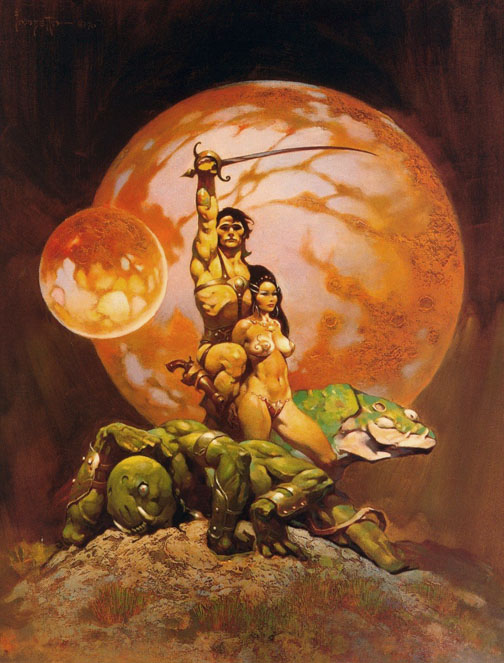
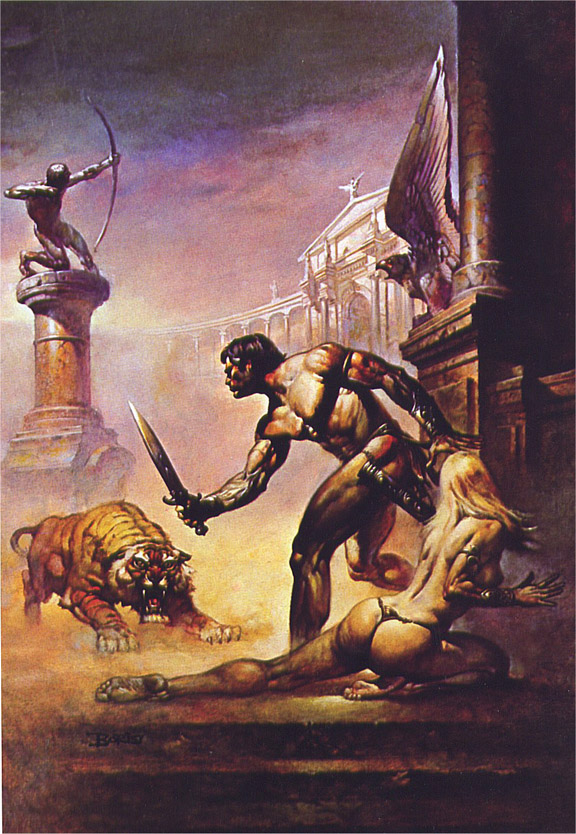

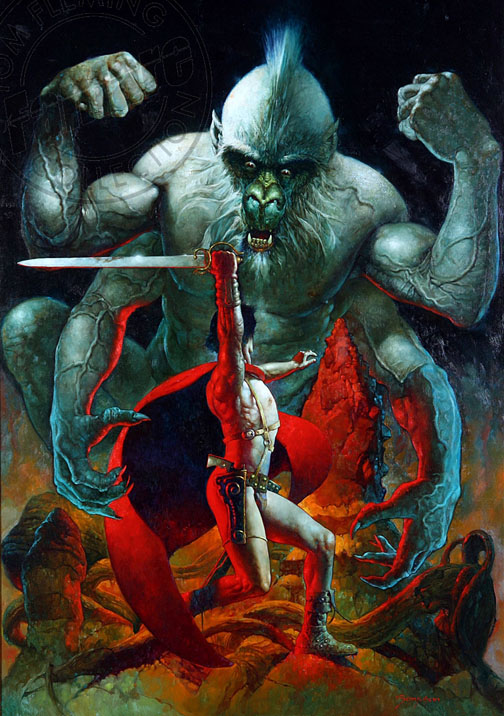
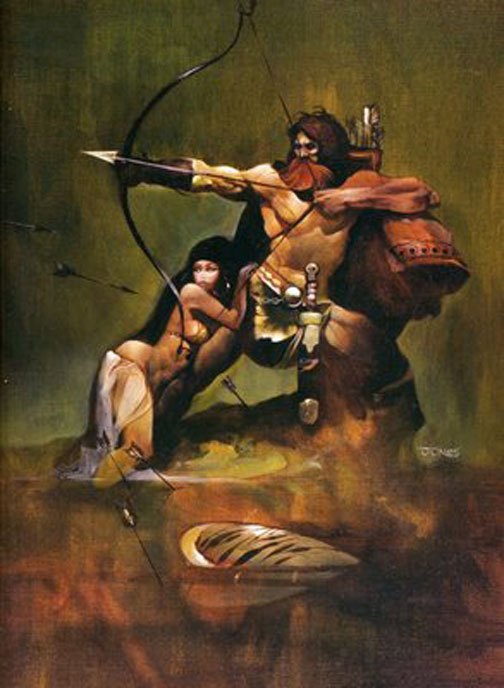


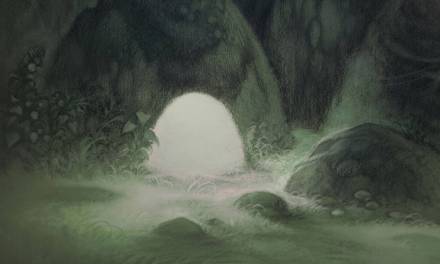
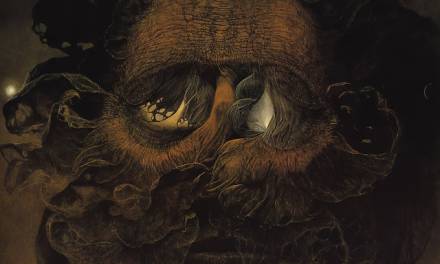
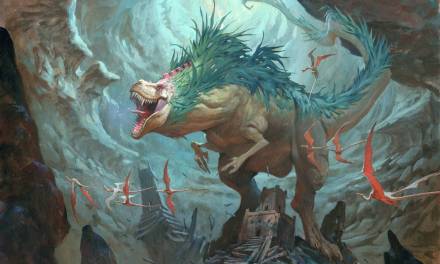
Interesting post, Arnie. It puts in mind of Schiele writing “I went by way of Klimt til March. Today, I believe, I am his very opposite.” Sometimes artists act like signposts to us, signaling a path we're drawn too. We go *through* them on our way down our own paths.
Jones is a great example to have chosen – early on, one can see him trying on styles like suits in a shop. You see a Klimt, a Larson, a Frazetta, a Wyeth, etc… and then he stretches out into his own intensely personal territory, rapidly becoming quite unlike any of those artists. He reminds me a lot of another favorite of mine, Helene Schjerfbeck, who moves over time from highly realistic (if somewhat staid) work towards a striking, almost futuristic minimalism that is all her own.
I feel that my own personal influences must be blatantly obvious – and yet I don't consider those artists to be “destinations”. To me, they are signposts along the way that I read carefully and mark on my own map…
i think i'll be printing this out to leave in the art dept at my college. thanks arnie!
This is an interesting viewpoint on artistic inspiration. Imagine if Frazetta had never existed, what would have been the effect on artists such as Boris and Kelly? I bet their art would be radically different. Maybe they would not even be in the illustration business.
Great post Arnie. It's really important to understand that artists and creatives will have continual influences throughout our life. The internet makes viewing art more accessable than ever. I for one am still working and trying to find my “style” which I know will find me eventually, but sometimes I feel so resistant to influence for fear of being a clone. But your post reminded me that people like Jeff Jones, Boris Vallejo and even Justin Sweet have clearly been influenced by Frazetta, but it's their skill and passion that allowed them to take that influence and make it their own. It also reminded me what Greg Manchess said when interviewed on Sidebar, that it's better to avoid trying to be original and focus on being authentic.
Thanks for the interesting post on an always topical issue. That piece of advice Greg Manchess gave in the interview and Matt mentioned here is gold.
I used to procrastinate like there were numberless tomorrows, just because I thought that I'd have to be original. Not trying to be original frees you up to learn through trial and error. Now I believe that style is something that comes with time and practice.
And David, I like Schjerfbeck too.
I just picked up a copy of “Legacy” the other day and it was interesting to read how Frazetta struggled to prevent stagnation in his style having done so much work in someone else's for the sake of a job. But probably the best part of the book was a particular quote by Hogarth about students trying to imitate him. Haha
Ken Kelly and art in same sentence o_O.
Nice post as I was always struggeling (and still am) about finding my stile. I jump from one to another which might be good in some conditions and but then again, it makes a “coherent” portolio more difficult.
I always loved the balance between light and shadows in Frazetta's work.
I once read the sentiment that style is an artist's own mistakes, consistently delivered. Style could also be defined as the subconsciously expressed and/or consciously chosen visual proclivities that tend to flow out of an artist (some of which I'm sure is due to what other artists influence one's work, but I imagine at least some of it is simply natural —- maybe it's one's own unconscious way to stand out and survive in a colorful market of diverse stylistic offerings).
I work with fellow illustrators of a different genre, children's illustration, who are very powerful “chameleon” creatives, yet their own proclivities still seem to show forth across many of the styles they create in. Interestingly, they often have a visibly evident stylistic fingerprint, no matter which style is employed for a project.
Whether artists are illustratively chameleon-enabled or have a powerful single style of creativity, they can find themselves able to honorably support themselves. Most successful artists must, after all, satisfy an employer or client's needs with whatever tools they have available. Neither the elegant halberd nor the resourceful Swiss army knife is a more beautiful tool; each has it's rightful place in the pantheon of professional creativity.
And, BTW, thank you for your insightful post, Arnie. It has further prompted our thoughts and understanding on this topic. I appreciate it.
Thanks, Matt.
One of the easiest put-downs sure to cut deep is to accuse one artist of being the clone of another: 90% of the time the charge is BS and is made out of ignorance, jealousy, or spite. (And, yeah, 10% of the time it's probably accurate.) But we can't help BUT be influenced by what we see, by what makes us think and excites us. Frazetta casts a long shadow, partly, of course, because he had a powerful sense of drama which allowed him to paint cathartic scenes so memorably. It didn't matter if he fudged his anatomy or sometimes made a hash of proportions, you were almost always convinced of the “rightness” of the art when you saw it. But another reason is tied to the time he was producing his signature paintings and the age of the readers that were buying the books and magazines they were appearing on. The F&SF genre was growing in popularity and the pulp heroes were being rediscovered even as writers were creating new works: Frank was at the right place at the right time with the “style” (a heady blend of sex and death created in a classicist technique) that spoke to a new generation. Loudly.
But it is precisely as you say: the key is for an artist to absorb their influences and create something unique from them. Jeff Jones and Justin Sweet and Phil Hale and Brom are great examples of artists transcending their influences: just as Frank did paintings that, honestly, no one else could have (because no one could “see” the scene exactly the way he did in his mind), Jeff, Justin, Brom, and Phil created art that Frank NEVER could have produced. Because he couldn't “see the scenes” the way THEY did. You can say that about anyone else that achieves success in the arts.
To elaborate ever so slightly on Greg's astute observation: focusing on being authentic will ultimately ensure that you're an original.
Brandon, I know what you mean about children's book artists: people like the Dillons, Lane Smith, David Shannon, et al, employ that chameleon quality as they go from one project to the next while maintaining a unique and readily identifiable “voice.” It's fascinating.
Likewise it's fascinating to watch successful and well-known artists continue to explore different directions and techniques: compare the earlier, classic works by Brad Holland, Gary Kelley, and Mark English to their current art. They're different stylistically from the works that made them famous and yet readily identifiable as their art. Now I suppose the question that could be asked is: If they had started out with their current styles instead the ones they became famous for, would they be as, more, or less successful than they are now?
nice pics